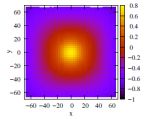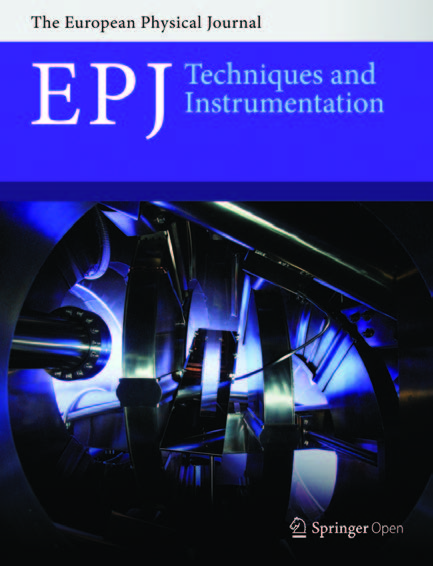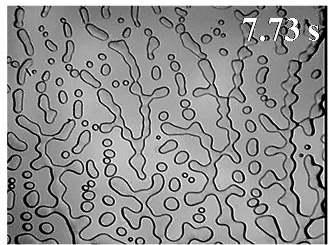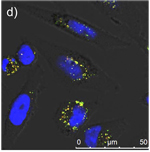News
EPJ D Highlight - New way of retaining quantum memories stored in light
- Details
- Published on 23 September 2015

Chinese scientists uncover a novel way of stopping light in a state that stores information encoded in photons, opening the door to applications in quantum information processing
A team of Chinese physicists has now developed a way to confine light. This is significant because the approach allows quantum memories stored within photons to be retained. These findings stem from a study by Nan Sun from Nanjing University of Posts & Telecommunications, China, and colleagues, which has just been published in EPJ D. The results may herald the advent of a multitude of hybrid, optoelectronic devices relying on the use of quantum information stored in photons for processing information that can be used in communication networks or quantum computing.
EPJB Colloquium: Modern temporal network theory
- Details
- Published on 18 September 2015

The power of any kind of network approach lies in its ability to simplify a complex system so as to better understand its function as a whole. Sometimes it is beneficial, however, to include more information than is available in a simple graph of nodes and links. Adding information related to the timing of interactions can facilitate more accurate predictions, as well as a deeper mechanistic understanding.
EPJ B Highlight - Surfing over simulated ripples in graphene
- Details
- Published on 17 September 2015

Scientists from India elucidate the theory governing the characteristics of curved or rippled graphene using a simulation model based on an optical lattice
The single-carbon-atom-thick material, graphene, featuring ripples is not easy to understand. Instead of creating such ripples physically, physicists investigating this kind of unusually shaped material rely on a quantum simulator. It is made up of an artificial lattice of light - called ultra-cold optical lattice - akin to eggs held in the cavities of an egg tray. This approach allowed a team of theoretical physicists from India to shed some light - literally and figuratively - on the properties of rippled graphene. These findings have just been published in EPJ B by Tridev Mishra and colleagues from the Birla Institute of Technology and Science, in Pilani, India. Ultimately, this work could find applications in novel graphene-based sensors.
EPJ TI publishes two tutorial style articles from the group of Sebastiaan van de Meerakker
- Details
- Published on 17 August 2015

As part of the new Thematic Series ”Methods for Cold Molecules and Ions: Tutorial Reviews” (Guest Eds. Stefan Willitsch, Hendrick Bethlem, Bob Continetti), EPJ Techniques and Instrumentation features two tutorial style articles from the group of Sebastiaan van de Meerakker (Radboud University, Netherlands).
EPJ TI Review - Merged neutral beams
- Details
- Published on 17 August 2015

A new review article has just been published in EPJ Techniques and Instrumentation, opening a new Thematic Series ”Methods for Cold Molecules and Ions: Tutorial Reviews” (Guest Eds. Stefan Willitsch, Hendrick Bethlem, Bob Continetti).
Merged neutral beams (EPJ Techniques and Instrumentation 2015, 2:10) by Andreas Osterwalder (EPFL, Switzerland) presents a detailed description of a merged beam apparatus for the study of low energy molecular scattering. In the experiment performed, a supersonic expansion of paramagnetic particles is merged with one of polar molecules, whilst a magnetic and an electric multipole guide are used to bend the two beams onto the same axis. Intended to inform any scientist who plans to construct a similar experiment, the article describes in detail how the apparatus was designed, characterised, and operated.
EPJ Data Science Highlight - What 15 years of mobile data can say about us
- Details
- Published on 05 August 2015

© Blondel et al.
Mobile communication has not shrunk the world as expected, according to an overview of big data analysis revealing the nature of our social interactions with greater accuracy than ever before.
Large-scale anonymised datasets from mobile phones can give a better picture of society than ever before available. Mobile phone use helps us understand social networks, mobility and human behaviour. A review article recently published in EPJ Data Science highlights the main contributions in the field of mobile phone datasets analysis in the past 15 years. Vincent Blondel from the Université Catholique de Louvain, in Belgium, and colleagues conclude, among other things, that predictions that the world would shrink into a small village have not completely materialised as distance still plays a role. Meanwhile, individuals appear to have highly predictable movements as populations evolve in a remarkably synchronised way.
EPJ E Colloquium: Adhesion induced pattern formation in constrained soft films
- Details
- Published on 31 July 2015

© Chaudhury et al.
A hydrostatically-stressed soft elastic film responds by developing a morphological instability, the wavelength of which is dictated by minimisation of the surface and elastic strain energies of the film. For a single film, the wavelength of this transition is entirely dependent on the film's thickness, however in the case of two contacting films a co-operative energy minimisation dictates that the wavelength depends on both the elastic moduli and the thicknesses of the two films.
EPJ B Highlight - Shaping the hilly landscapes of a semi-conductor nanoworld
- Details
- Published on 30 July 2015

A new study reveals how hexagonal-patterned, self-organised hill structures emerge in 2D at the nanoscale due to redeposition following semi-conductor bombardment with low-energy ions
Nanoscale worlds sometimes resemble macroscale roller-coaster style hills, placed at the tip of a series of hexagons. Surprisingly, these nanohills stem from the self-organisation of particles – the very particles that have been eroded and subsequently redeposited following the bombardment of semi-conductors with ion beams. Now, a new theoretical study constitutes the first exhaustive investigation of the redeposition effect on the evolution of the roughening and smoothing of two-dimensional surfaces bombarded by multiple ions. The results demonstrate that the redeposition can indeed act as stabilising factor during the creation of the hexagonally arranged dot patterns observed in experiments. These findings by Christian Diddens from the Eindhoven University of Technology, in the Netherlands, and Stefan Linz, from Munster University, Germany, have been published in a study published in EPJ B.
EPJ Quantum Technology Highlight - Gold-diamond nanodevice for hyperlocalised cancer therapy
- Details
- Published on 29 July 2015

Gold nanorods can be used as remote controlled nanoheaters delivering the right amount of thermal treatment to cancer cells, thanks to diamond nanocrystals used as temperature sensors
Precise targeting biological molecules, such as cancer cells, for treatment is a challenge, due to their sheer size. Now ,Taiwanese scientists have proposed an advanced solution, based on a novel combination of previously used techniques, which can potentially be applied to thermal cancer therapy. Pei-Chang Tsai from the Institute of Atomic and Molecular Sciences, at the Academia Sinica, Taipei, and colleagues just published in EPJ QT an improved sensing technique for nanometre-scale heating and temperature sensing. Using a chemical method to attach gold nanorods to the surface of a diamond nanocrystal, the authors have invented a new biocompatible nanodevice. It is capable of delivering extremely localised heating from a near-infrared laser aimed at the gold nanorods, while accurately sensing temperature with the nanocrystals.
EPJ D Highlight - Identifying ever-growing disturbances leading to freak waves
- Details
- Published on 27 July 2015

Physicists now better understand wave systems exhibiting unusual disturbances by identifying growing localised patterns as early indicators of such disturbances
Physicists like to study unusual kinds of waves, like freak waves found in the sea. Such wave movements can be studied using models designed to describe the dynamics of disturbances. Theoretical physicists, based in France have focused on finding ways of best explaining how wave disturbance occurs under very specific initial conditions that are key to the genesis of these disturbances. They looked for solutions to this puzzle by resolving a type of equation, called the nonlinear Schrödinger equation. It is solved by applying a method designed for studying instabilities tailored to these initial conditions. Their approach makes it possible to locate exactly where and how pertinent information used to identify disturbance patterns can be extracted from localised disturbances' characteristics. The findings have been published in EPJ D by Saliya Coulibaly, from the University of Lille, and colleagues.




